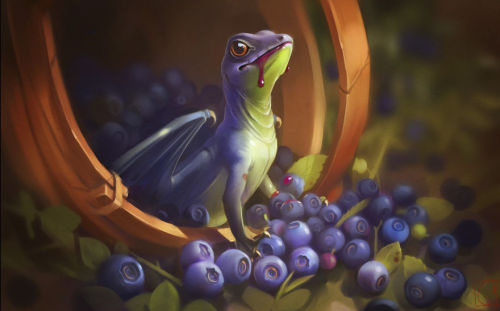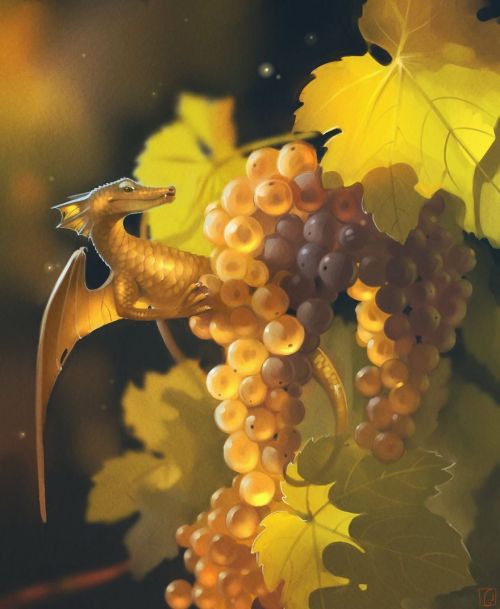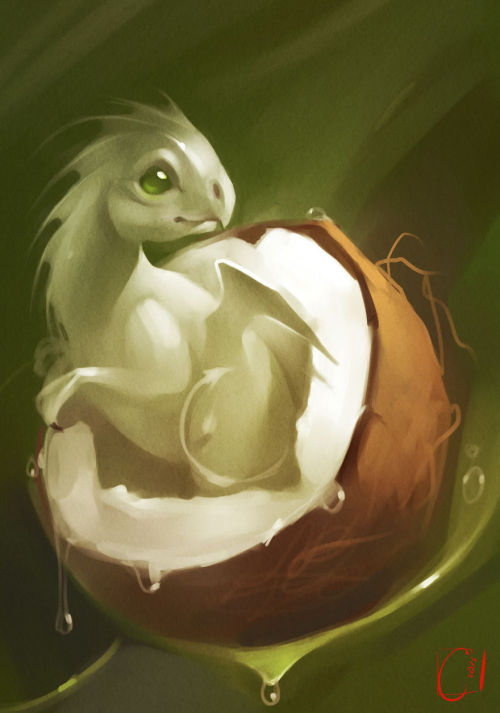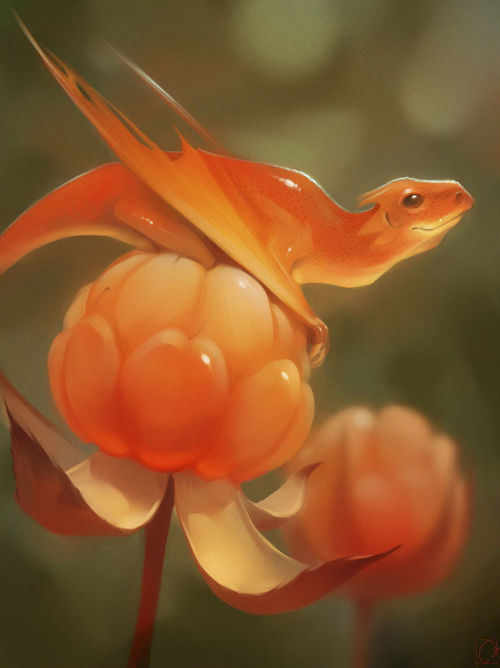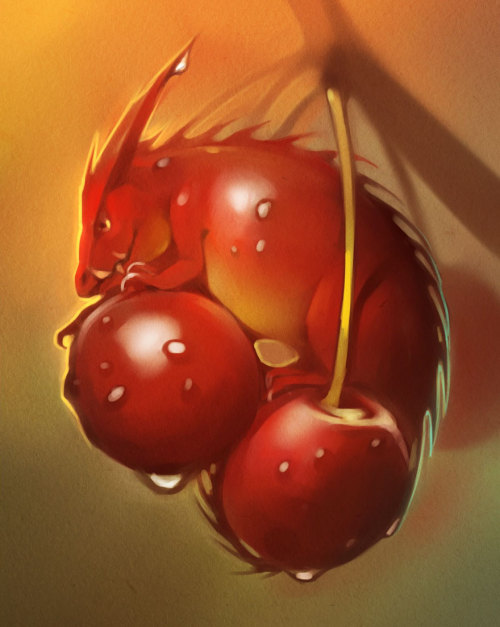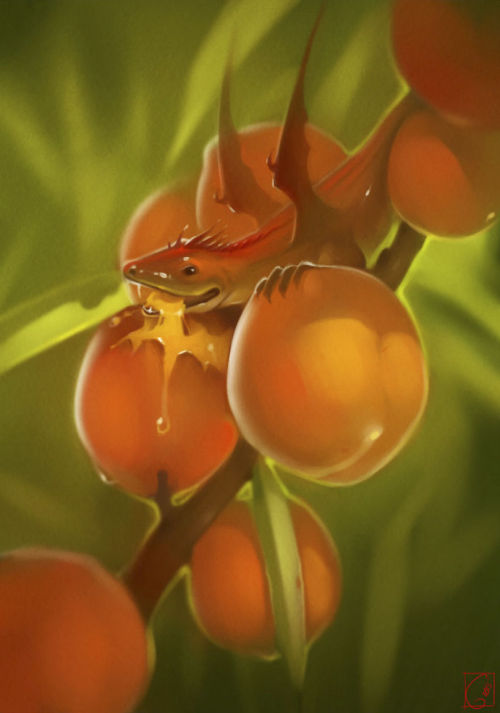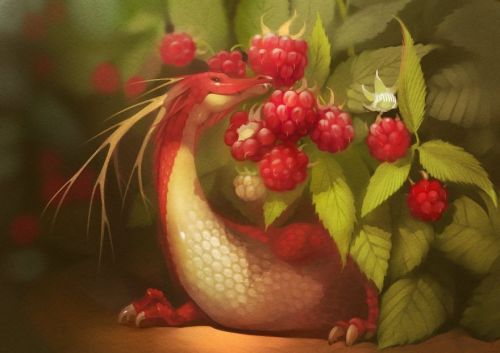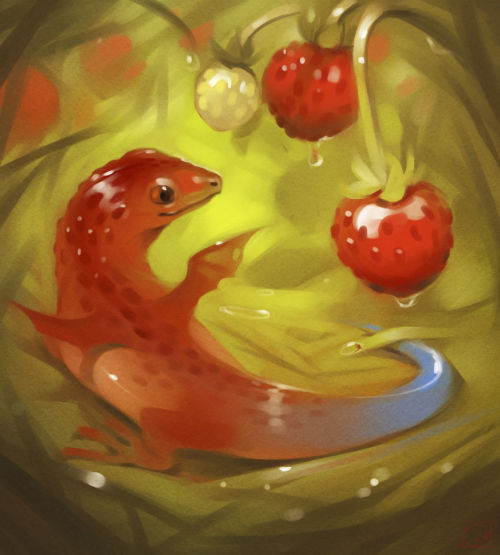Latest Posts by q587p - Page 3
Loving the idea of earth cryptids/folklore monsters being real only the humans have no idea until after first contact.
AU where...
Aang died with the air nomads.
The next two Avatars, from water and earth, live without ever knowing who they are.
Zuko still spoke out at the meeting, he still refused to fight his father in the Agni Kai.
Zuko was banished, and in his search to find the Avatar, earth bends.
He is the Avatar and doesn’t know what to do about it.
MORE MUGS
moist von lipwig:

and adora belle:

AE pessimal:

when sybil buys vimes a mug:

when VETINARI buys vimes a mug, because no one will EVER believe it was him that bought it:

sybil:

angua:

carrot:

otto:

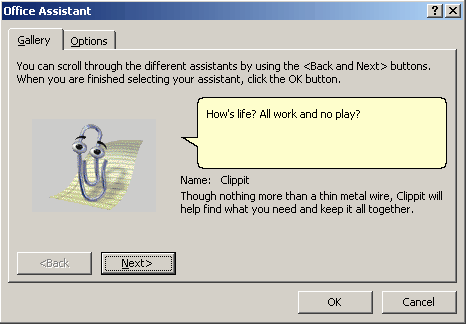

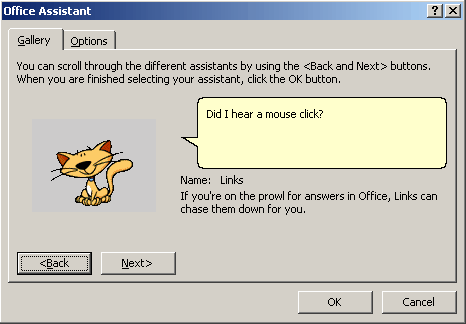

Microsoft Office XP assistants
Fun Crafts With Dirt!!!
First, make a small hill:

Make sure it's high enough to see all of your neighbors!
Now dig a circular ditch around an area in front of your hill:

Don't forget to use that extra dirt from the ditch to make an embankment:

If you're feeling especially funky and creative you can sharpen some logs and put them on top of that embankment for a palisade:

CONGRATULATIONS! You have now made your own Motte (not the apple sauce brand, that's Mott) and Bailey castle!

Proceed to exercise your feudal authority over your neighbors at your leisure.
Animal Crossing Fish - Explained #62
Brought to you by a marine biologist who has a pen…and has a pineapple…
CLICK HERE FOR THE AC FISH EXPLAINED MASTERPOST
Tell me if I’m referencing memes that are too old and watch me not care. Anyway, let’s go over the Sea Pineapple, because I bet you don’t know really what it is, and tbh, I didn’t for a second either. But it turns out it is a type of Sea Squirt, and therefore, of all the invertebrates in the game, we, as vertebrates, are most closely related to this thing. I’ll explain in a minute:

We here on Northern Hemisphere islands are able to dive for this thing all day and night, so if you haven’t caught one yet, just give it some time. Then, when you give your first one to Blathers, it’s put into the big coastal tank underneath the coral reef tank and it just…sits there. Which is totally understandable, considering this animal - yes, it’s an animal - lives a sessile life, meaning it attaches to something and stays there. It also filter feeds, so you see its little siphons opening and closing.
The Sea Pineapple is a real animal, Halocynthia roretzi and it’s eaten primarily in Korea and less so in Japan, despite the fact that a lot people say it tastes like not-food. But, hey, humans will eat anything.

So, Sea Pineapples are a kind of Sea Squirt, aka a Tunicate, a soft, squishy that sits on the seafloor and filter feeds. But despite this thing not having a face or an interesting lifestyle, the fact remains we’re more closely related to it than we are to the cooler invertebrates, like insects, worms, or octopuses. They belong in the Phylum Chordata with us, the even-more-interesting vertebrates. Now, I’m gonna try REAL HARD not to go off on a nerd-tastic tangent, but this is one of my favorite topics - chordate phylogeny.
So, what’s a Chordate? It is not synonymous with “vertebrate” although lots of us in the phylum are vertebrates. All animals in this phylum have 5 very distinct features that no other group has, either during our whole lives or part of our lives (that includes larval or embryonic stages). They are:
A post-anal tail, meaning our bodies extend past our anus.
We have a notochord, aka what my professor called “the stiffening rod of the body”. In humans, this is our spine.
A dorsal neural tube that, in us vertebrates, is the spinal cord, the main communication highway of the nervous system.
An endostyle/thyroid gland.
Pharyngeal slits, which often become gills in adult stages of chordates.
Although the Sea Pineapple doesn’t look like it has any of these features, its larvae do, which puts them in the same phylum as us vertebrates. Wild, huh?And this list of features puts us together with some weird stuff, the weirdest has to be tunicates, as shown by this phylogenetic tree:

^From this site. This should look kind of familiar since a stylized one is on the floor of the fossil section of the museum. I’ll do a special fish-explained to talk about that and how to read one of these. But basically, every node, or intersection of the branches represents the last common ancestor of the groups at the end of the branches. Once you can read these, you start to find out some very interesting, and mind-blowing facts, like, we’re all just derived fish and that birds evolved from dinosaurs and whales are most closely related with hoofed mammals and we’re related to boring tunicates instead of cooler things, like horseshoe crabs.
And there you have it. Fascinating stuff, no?
morally grey/evil scientist characters are always like biochemical engineers or nuclear physicists or whatever but the people want VARIETY give me a story about a fucked up geologist for once
Loving the idea of earth cryptids/folklore monsters being real only the humans have no idea until after first contact.
Тигроснежка и семь котиков









Тигроснежка и семь котиков
We might have misunderstood Hogwarts Houses for years
I have a theory that the valued quality of each of the four Houses isn’t really about the personality of its students.
The valued quality of each of the four Houses has to do with how they perceive magic.
Stick with me a second: Hogwarts is a school to study magic. Magic as Hogwarts teaches it can be seen as many things: a natural talent, a gift, a weapon, etc.
So how you believe magic should be used will both reflect your personality and change how you handle that power.
“Their daring, nerve, and chivalry set Gryffindors apart,” Gryffindors perceive magic as a weapon. Gryffindors tend to excel in aggressive forms of magic, like offensive and defensive spells, and they are good at dueling. But a true Gryffindor knows that the power is a responsibility, and so they must always use their powers to stand up for what’s right. They are the sword of the righteous, which makes them as good at Defense Against the Dark Arts as they are at combat magic.
Hufflepuffs believe that magic is a gift and that the best gifts are to be given away. Hufflepuffs, “loyal and just,” would naturally abhor the idea of jealously guarding magic or using it to hurt someone else. So Hufflepuffs share their magic to benefit of Muggles, like the Fat Friar, to protect the overlooked, like Newt Scamander with his creatures, or to oppose those who would use magic to torment and bully, like the Hufflepuffs who stood with the DA and the battle of Hogwarts.
Slytherins are the opposite: they believe their magic is a treasure that they have been entrusted to protect. The Slytherin fascination with purity, with advantage, with cunning and secrecy–all of which were perverted by the Death Eaters–comes from the idea that people with magic in their veins have been given something special that it is their duty to protect at all costs. And perhaps they aren’t entirely wrong: power in the wrong hands can be dangerous. And power interfering at will with Muggle affairs is a gross presumption that could turn the course of history. Though the series shows some of the worst that Slytherin can be, “evil,” is not a natural Slytherin tendency. “Cautious,” is.
Ravenclaws believe that magic is an art form, one that is beautiful and should be appreciated and studied for its own sake. If “wit beyond measure is man’s greatest treasure,” then asking what magic is for is useless. It’s more important to immerse oneself in magic for its own sake. Ravenclaws push the boundaries of magic to see if they can, hence Hermione’s spell experiment on the DA coins being dubbed a Ravenclaw quality, but like Luna Lovegood in the pursuit of extraordinary creatures: they can also be content to plumb the depths of what already exists.
So while you can see where personalities will overlap over Houses, perhaps in Sorting we should be asking ourselves less what we think we are and more what we think we believe.
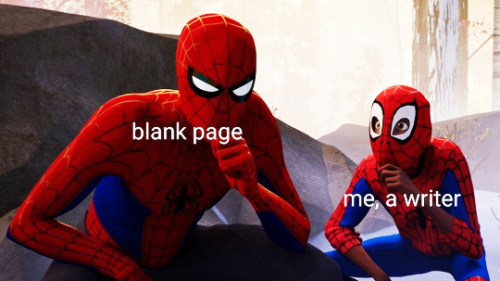
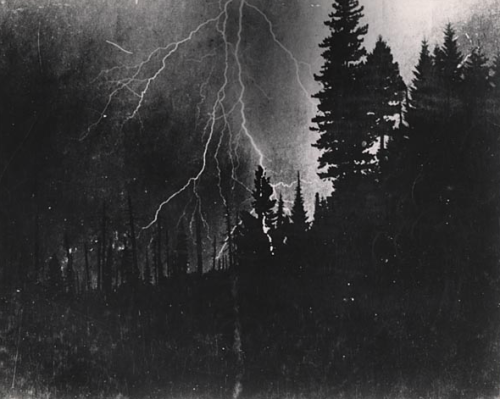
Lightning starts a forest fire, 1960s
Decomposing Undertale’s Music Composition Structure
The Undertale soundtrack is enormously fun, expressive, and symbolically meaningful. It also, interestingly enough, is composed with a very small pallet of compositional techniques. The majority of tracks are written the same way. An astonishing number of Undertale’s OST songs contain most/all of the following elements:
An ostinato. If there is not an ostinato, there is still a background line that maintains repeated rhythmic and pitch movement patterns.
An ostinato introduction paradigm. The ostinato is introduced first, then the midground, then the melody.
Melody made of parallel periods. The melody consists of eight bar periods with a parallel question and answer phrase. That is, the first line of the melody and the second line of the melody start similarly and in a way “mirror” each other.
Everything melodic is repeated twice. Melodic structural units are played twice in a row before introducing something new.
Binary Form. The pieces overall consist of a Binary AABB form. That is, the piece starts with one big melodic theme and then ends with a second big melody theme.
Below, I will describe in depth how to structure and develop a “prototypical” Undertale track piece.
Step 1: Create an ostinato
An ostinato is a short unit of music that plays on repeat throughout a piece. The notes and rhythms stay exactly the same and are repeated over and over without stop. A good example of an ostinato is Pachelbel’s canon. The cellos play the same notes on repeat from start to end. That’s the ostinato.
A dramatically high percentage of the pieces in Toby Fox’s Undertale soundtrack make use of an ostinato, including but not limited to: “Fallen Down,” “Ruins,” “Ghost Fight,” “Heartache,” “Snowy,” “Snowdin Town,” “Bonetrousle,” “Nyeh Heh Heh!”, “Dummy!”, “Death by Glamour,” “An Ending,” “Here We Are,” “Amalgam,” “Gaster’s Theme,” “Battle Against a True Hero,” “Power of NEO,” and “Megalovania.”
To give an example, below is the notation to the four measure ostinato in “Megalovania”. You can hear this ostinato played by itself at the very beginning from 0:00-0:07. Note that when the bass line comes in 0:07, it is also a four measure repeating unit that recurs throughout much of “Megalovania.”

The first half of “Battle Against a True Hero” uses the ostinato I have transcribed below. It comes it right at the start of the piece (0:00) with the solo piano. The second half of the track is a second, different ostinato. Like “Megalovania,” the bass part is also an ostinato playing alongside the piano.

Below, the ostinato which starts (0:00) “Death by Glamour.”

The Ostinato in “Ruins” and “An Ending”, also introduced right at the start 0:00.

The point of the matter is, while ostinato is one compositional device that’s been used for centuries, it’s not present as frequently as Toby Fox himself uses it. He has an unusually high percentage of ostinato pieces; the Undertale soundtrack relies heavily on it.
If not an ostinato, something ostinato-like
Sometimes the background or mid-ground (that is, the part of the music that is not the melody but not the basic background) in an Undertale track is not a strict ostinato. That is, the same notes and pitches don’t repeat perfectly over and over and over again. However, when Fox doesn’t use a perfect ostinato, there is almost always something ostinato-like, a repeated rhythmic pattern that has an embedded pitch pattern as well. The notes might not be 100% the same every time they repeat, but it’s still a noticeable pattern.
For example, “Spear of Justice” and “NGAHHH!!” have a dramatic bass line that is built on a recurring rhythm. However, the chords of that bass line change around, so the notes aren’t exactly the same every time you hear an iteration of the rhythmic pattern. The notes usually arpeggiate (move up and down) the same way, though, along the same rhythms.
“Your Best Friend” is another example. Below is part of the accompaniment for that song. If you notice, there is a general four note pattern in which the notes move up and down the same way. The individual notes might change (as I have circled), but the pattern rhythmically and generally pitch-wise remains the same.

Step 2: Introduce the ostinato, then more accompaniment, then the melody and jam
What’s interesting is that it’s not just that there’s a liberal presence of ostinatos in the soundtrack, but that they’re frequently introduced, used, and implemented the same way each time. There is a certain “ostinato introduction paradigm” Toby Fox likes to use.
First, the ostinato is introduced by itself. Then, other accompaniment (non-melody) is layered on top of the ostinato. Last, the melody jumps in, oftentimes with the explosion of a more energetic drum rhythm. Sometimes the second step I mentioned is skipped, but this sort of pattern nevertheless manifests itself in piece after piece.
For example, “Battle Against a True Hero” begins with a solo piano playing the ostinato. After it plays the ostinato once, we get some mid-ground music at 0:05. After the mid-ground is introduced, Toby Fox inserts in the melody at 0:18. The drums kick in at the same time as the melody at 0:18.
Now listen to “Death by Glamour.” The ostinato starts by itself in a single instrument (also, amusingly, a piano). A few instruments are added on top of it between 0:06 and 0:25. At 0:25, the entire music ensemble is in and a melody is introduced. Though there was a kick drum earlier, it’s at 0:20, near to the introduction of the melody, that the drums really start going.
Exact same pattern.
Now listen to the start of “Megalovania.” It again begins with a single instrument line, a four measure ostinato. Then, at 0:07, a bass line is added below it. After that cycles through once, the entire ensemble jumps in at 0:15, the drums kick up, and we’re off to the races.
Exact same pattern.
And if you want more fun listening, check out “Dummy!” Ostinato at start. Midground at 0:07 with a bare bass drum. Melody at 0:22 with full drum set. Same thing happens in “Ghost Fight.” Same thing happens in “Snowdin Town.” Same thing happens in “Thundersnail.” Same thing happens in “Amalgam.” Same thing happens with many, many more tracks throughout the Undertale OST.
With the rhythmic patterned accompaniments that are not quite ostinatos, you still see the same sort of “ostinato” introduction paradigm. Examples of this include “Waterfall,” “Alphys,” “Temmie Village,” and “Metal Crusher.”
Toby Fox uses not only an ostinato frequently, but he also often uses this particular technique of introducing and developing the ostinato. It’s a stock trick of his. These pieces are written and developed the same way.
So the ostinato describes the accompaniment pattern Fox likes to utilize. But what about the melody? It turns out there are a lot of patterns Fox uses for melody, too.
Step 3: The melody consists of two parallel lines
A phrase is a line that sounds sort of like a musical sentence or, well, a phrase. It has a notable start and end point. If you were singing a phrase that had lyrics to it, the phrase would be one line of lyrics.
Toby Fox’s phrases are always four measures long. They also always come in pairs. This is a very common musical composition structure. A pair of phrases in fact has its own technical term - it’s called a period.
There are several different types of periods in music composition, but Toby Fox almost invariably uses the same one every time. He composes a parallel question and answer period.
“Question and answer” means that the second phrase sounds like it is resolving something the first phrase introduces. The first musical phrase ends in a sort of “question” - that is, it doesn’t sound finished when you reach the end of it. Just like a spoken question has raised intonation at the end (in English), it sounds like the musical phrase’s question is incomplete. The second musical phrase ends in an “answer” - that is, it ends the notes with a resolute conclusion and landing by the end. It sounds like the lowered, resolving intonation you hear when someone talking answers a question with a declarative sentence.
Now, phrases being question and answer is still pretty common in the music composition world. But what you also see in Undertale is that the phrases are parallel phrases, too. That is, the first phrase starts the same way that the second phrase does.
I could practically list the entire Undertale soundtrack for being culprit to the parallel question and answer eight bar periods. But I’ll pull out just a few examples to concretely show what’s going on.
One of the best examples of this melodic form is in “Your Best Friend” because the entire melody consists of that eight bar parallel question and answer period.

Period 1 is the first four measures, notated on the top line. Period 2 is the second four measures, notated on the bottom line. Notice that Periods 1 and 2 start the same way, and in fact the first 13 notes from each are exactly the same. Even when they do diverge pitches at the end, they still keep the same rhythm. Period 1 is considered a question because it ends on an F, which is the fifth scale degree of the key signature, a Bb, so Period 1 ends on the V chord. The V chord is considered to be an incomplete sound when you stop there. It’s a question. But Period 2 ends on the I chord with the first scale degree, the Bb, which is an answer or resolution.
To visually show another example, here’s “Nyeh Heh Heh!” / “Bonetrousle”:

In “Nyeh Heh Heh!”, only the first four notes of Period 1 completely match the pitches of those notes in Period 2. However, if you look at my arrows, you’ll notice we keep the same parallel up and down motion throughout each of the lines. The pitches still move directionally in the same way throughout the lines. Especially since the two phrases start the same characteristic way, and then bounce up and down the same way, we audiences hear a parallel question and answer.
But this structure is really everywhere. The dating themes. “Snowy.” “Spear of Justice.” You name it. It’s there.
Step 4: Everything melodic is repeated twice
Music has a lot of different structural units of different sizes. There are small units in music, like a four measure phrase. There are larger units, like an entire thematic section, which is usually labeled “A” or “B”. When Toby Fox has distinct melodic (or ostinatic) material, he repeats it twice before introducing something new.
Screencap of “Spear of Justice” sheet music from Jester Musician.

“Spear of Justice” is a perfect example of this “repeat in twos” paradigm. The song’s introduction consists of a four bar phrase repeated twice (0:00-0:05 and 0:05-0:10). Then the bass and drums come in. We hear a four bar unit again repeated twice (0:10-0:15 and 0:15-0:21). Then we switch key signatures. We hear a four bar unit again repeated twice (0:26 and 0:26-0:30). There is a little tag at the end finishing the A section and leading into the B section.
The first two phrases of the B section are exactly the same as one another and can be heard from 0:35-0:41 and 0:41-0:47. The next two phrases are also exactly the same as one another and can be heard from 0:47-0:53 and 0:53-0:58. So what Toby Fox does is play one phrase, repeat it, play a new phrase, repeat it. Rule of two. Then, he repeats this ENTIRE chunk from 0:35-0:58 again at 0:58-1:19. Here he’s got embedded layers of two.
For the rest of the B section, 1:19-1:31 is a period, and 1:31-1:41 is a repetition of that period. We get one last repetition of this period (which is identical to 1:31-1:41) before the song ends.
I could keep giving more examples of this exact same phenomenon throughout the soundtrack. “Home” has the opening guitar eight bar period repeated twice before the melody comes in. Then that melody is played twice. “Bonetrousle” has literally everything melodic duplicated in twos from start to finish. I’ll talk more about that piece later.
Toby Fox loves things in twos.
Step 5: Make it binary form
Binary form is a description of how a composition’s melodic themes are arranged. Binary form means that there are two main themes, “A” and “B”. The A theme gets played, thenb the B theme gets played, and then the piece is done. Usually in binary form, each theme gets played twice, so technically it’s AABB. This form is extremely, extremely common in Undertale.
To give just a few examples:
“Battle Against a True Hero” has an A section focusing on one melody and one ostinato from 0:00 to 1:35. Then, the rest of the piece is the B section, focusing on a second ostinato and melody.
“Nyeh Heh Heh!” and “Bonetrousle” are very simple, but technically you can divide them into two parts (by two periods that contain the entirety of the melody). The first period is the A section and is heard in Nyeh Heh Heh from 0:00-0:18 The second period is the B section and is heard from 0:18 to 0:32.
“Snowy” plays the same melody repeatedly from 0:00 to 1:02. The second half of the piece, the B section, goes from 1:02 to the end.
“Amalgam” has an A theme from 0:00 to 0:42. The B theme is 0:42 to the end.
“Enemy Approaching” has an A theme from 0:00 to 0:30. The B theme picks up from there and goes to the end of the piece.
“Here We Are” has an A section until about 0:43. When the piano takes over at that point, we enter the B theme. It continues more or less until the end of the piece.
A few pieces in Undertale have ternary structure, which means that you return to the A after the B is played. So, basically, they are ABA form. “Dummy!”, “Death by Glamour,” and “Heartbreak” are some examples of ternary structure in Undertale.
Examples: putting this all together
I will now go through several tracks in Undertale and show how they fall into all of these compositional steps and techniques. Lots of Undertale pieces really are written the same way.
Bonetrousle
Bonetrousle is introduced with a bass line that repeats every four notes. This pattern is basically an ostinato in the first half of the piece. However, it is to note the notes do change halfway through the song (at 0:30), and in the second half can only be described as a rhythmically patterned bass. Still, the accompaniment falls into exactly what I observed in the beginning of this analysis (Step 1).
The bass line is introduced by itself at 0:00 before the melody jumps in at 0:06 (Step 2).
The four note bass pattern is repeated four times (two twos) from 0:00-0:06 (Step 4).
The melody consists of a parallel question and answer period. The first phrase, the question, is 0:05-0:11, and the answer phrase is 0:12-0:18 (Step 3). I have already discussed how these are parallel phrases.
The period from 005:-0:18 is repeated at 0:18-0:30 - Rule of Twos (Step 4).
Bonetrousle consists of an A theme from 0:00-0:30 and a B from 0:30 to the end, making Bonetrousle binary form (Step 5).
The B theme consists of a period that is in parallel question and answer form. The question phrase is 0:30-0:37 and the answer phrase is 0:38-0:43 (Step 3).
The period from 0:30-0:43 is repeated at 0:43-0:58 because, of course, everything melodic has to be played twice (Step 4).
Battle Against a True Hero
The piece begins with an ostinato playing by itself (Step 1). The ostinato is, in a way, a parallel question and answer (Step 3).
The ostinato introduction paradigm is met. The ostinato plays by itself once from 0:00-0:05. Mid-ground music is added on top of the ostinato 0:05. After the mid-ground is introduced, Toby Fox inserts in the melody at 0:18. The drums kick in at the same time as the melody at 0:18 (Step 2).
The mid-ground introductory section is played twice at 0:05-0:11 and 0:11-0:18 (Step 4).
The melody is in periods with parallel phrases (Step 3).
The first two lines of the melody are played twice at 0:19-0:30 and 0:31-0:43 (Step 4).
The second two lines of the melody are played twice at 0:43-0:56 and 0:57-1:08. Then, this whole thing, 0:43-1:08, is then repeated from 1:08-1:34. Twos two twos everywhere (Step 4).
The A theme plays from 0:00-1:35. The B theme plays from 1:35 to the end, making “Battle Against a True Hero” binary form (Step 5).
The B theme starts with a new ostinato, introduced by itself in the piano (Step 1). At 1:45, strings are layered on top of the ostinato. At 1:54, everyone comes in, including the bass, the melody, and the drums. That’s the ostinato introduction paradigm being implemented a second time in this track (Step 2).
The B melody consists of a parallel question and answer period. The question can be heard from 1:55-2:03 and the answer is 2:03-2:13. If you notice, these are parallel phrases because they start the same way, and in fact have many notes in common before they end slightly differently (Step 3).
The melody is repeated twice 1:55-2:13 and 2:14-2:37 (Step 4).
Enemy Approaching
The main groove is introduced from 0:00-0:10. The rhythmic bass pattern heard at the bottom is consistent throughout the entire song (Step 1).
The accompaniment and mid-ground are introduced at 0:00-0:09. The melody kicks up at 0:10 with a fuller drum kit (Step 2).
The melody consists of a period with parallel question and answer phrases. The question can be heard from 0:10-0:15; the answer is 0:15-0:20. Note that both phrases start the same way - they’re definitely parallel and share a lot of notes in common (Step 3).
The period from 0:10-0:21 is repeated at 0:20-0:30.
You could call the first half of the melody from 0:00-0:30 an A and the second half of the melody from 0:30-0:56 a B, in which case you could argue this is binary structure (Step 4).
The period in B is a parallel question and answer. The question is 0:30-0:35 and the answer is 0:36-0:41 (Step 3).
The period from 0:30-0:41 is repeated at 0:41-0:56, because of course everything melodic has to be done in twos (Step 4).
These are just a few examples. There’s no need to go through every piece, but suffice it to say, my generalizations hold up to a large number of the tracks in the Undertale OST. Not every piece correlates to what I have mentioned, but many of them do.
It is really fascinating to see the diversity of melodies and moods that can be created from such a simple compositional structure. Yes, while the limited composition technique makes many tracks predictable and less original, the common form still shows us how one technique can be implemented multiple times to make many memorable and enjoyable songs. The structure also, in its own odd way, cements the pieces together to sound like a uniform soundtrack.
It is interesting to me, as a composer, to see how different composers structure their pieces. It allows us musicians to see what does and does not work. Toby Fox, while he sticks with one structure for a large portion of his pieces, uses a structure that works. By looking at this, we can listen, understand, and perhaps appreciate the solid structure within the Undertale OST.
Help me translate my GOnalytics!
Guys, as some of you know, I’ve written an analytical text on Good Omens TV Show by Amazon Prime. It’s in Russian, as it’s my native tongue, and I would like to have it translated, so English-speaking part of Good Omens fandom could also read it. I truly think it’s worth it: it’s the biggest and the most important text project of mine so far, and I would really like to reach as many people as possible. I do speak English myself, but it is definitely not enough to make the text sound as smooth as it (hopefully) does in Russian. So, I’m looking for a pro translator, fluent Russian, native English. Being Good Omens fan might be a plus, but naturally it’s a regular paid job anyway, so, the skill is way more important.
It’s not often when I ask for repost, but now’s the time. Even if you don’t know me, but somebody you know might be interested in the job, or maybe some of their followers might want it - PLEASE REPOST! I’m a nice guy to work with, and I will provide any possible assistance with the translation.
You can also share this post on Twitter: https://twitter.com/tomash_beran/status/1229714449801543680
Thanks to all of you who decide to share!
https://docs.google.com/document/d/1b1ZyorUrm2_v6IEsMK3THZbRZQ5QpGY7Vt9ZV6_hEUI/
Ребята, я страстно мечтаю перевести свою аналитику по сериалу Good Omens на английский, чтобы иметь возможность расшарить ее в англо-фандоме. Это изначально был план, мне кажется, она того стоит, и мне хотелось бы донести ее везде и всем, кому может быть интересно. Сам я с переводом не справлюсь: английский все-таки не родной, мне не хватит легкости, а также английских идиом и слэнга, а терять эти штуки не хотелось бы. Поэтому - ищу профессионального переводчика со свободным русским и родным английским. Было бы здорово, если бы человек любил GO, но это не обязательно - в любом случае, это оплачиваемая работа, так что качество важнее фанатизма)
Я крайне редко прошу о репосте, но сейчас настал тот самый момент. Даже если вы не знаете меня и не знаете никого в своем окружении, кому могло бы быть это интересно, возможно, среди друзей ваших друзей найдется кто-то, кто захочет взяться. Поэтому - ПОЖАЛУЙСТА, РАСШАРЬТЕ! Кто знает меня, подтвердит: со мной приятно работать, я помогу с русским слэнгом и с чем угодно еще и смогу адекватно оценить перевод.
У кого есть твиттер, можно также расшарить этот пост: https://twitter.com/tomash_beran/status/1229714449801543680
Заранее спасибо всем, кто решит поделиться!




based on a true story
Baldur’s Gate (fan trailer)
I made this a long time ago, but I’m reposting directly to Tumblr because apparently YouTube has been giving people regional viewing issues. Enjoy.





Kmeny (”Tribes”) - New Czech LARP set in a fictitious tribal society
(photos by EXPit thru lens)
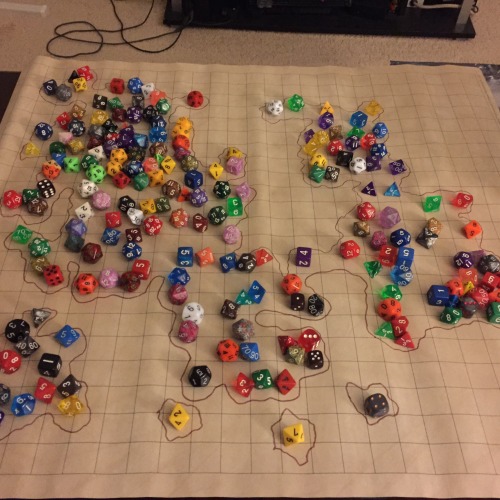
My super advanced mapmaking technique - a handful of dice makes the map nice
Whenever Americans use Cryillic like. That. I just. Instantly shrivel up an cry
Кстати, Лорд Витинари, верховный правитель Анк-Морпорка, очень любил музыку.
Людям страшно хотелось узнать, какая именно музыка могла привлечь такого человека. Заформализованная камерная музыка, может быть? Или громомечущие оперы?
На самом же деле он предпочитал стиль, исключающий исполнение. Любое исполнение, полагал он, подвергает музыку издевательствам, заключая её в высушенные шкуры, останки дохлых кошек и куски металла, расплющивает её в проволоку и трубки. Она должна оставаться на бумаге, в виде рядов маленьких точек и крючков, аккуратно сидящих на линейке. Только в таком виде она чиста. Она начинает гнить сразу же как только люди дотрагиваются до неё.
Куда лучше спокойно сидеть в комнате и читать ноты — ничто не встаёт между тобой и замыслом композитора, кроме росчерков пера. Слушать её в исполнении потных жирных мужиков, у которых из ушей растут волосы, а с гобоев капает слюна… сама мысль об этом вызывала у него содрогание. Хотя и не очень сильное, поскольку он никогда и ничего не доводил до крайности.
(«Ро ́ковая музыка», Терри Пратчетт)
Besides, Lord Vetinari, the supreme ruler of Ankh-Morpork, rather liked music.
People wondered what sort of music would appeal to such a man. Highly formalized chamber music, possibly, or thunder-and-lightning opera scores.
In fact the kind of music he really liked was the kind that never got played. It ruined music, in his opinion, to torment it by involving it on dried skins, bits of dead cat, and lumps of metal hammered into wires and tubes. It ought to stay written down, on the page, in rows of little dots and crotchets all neatly caught between lines. Only there was it pure. It was when people started doing things with it that the rot set in. Much better to sit quietly in a room and read the sheets, with nothing between yourself and the mind of the composer but a scribble of ink. Having it played by sweaty fat men and people with hair in their ears and spit dribbling out of the end of their oboe… well, the idea made him shudder. Although not much, because he never did anything to extremes.
-Soul Music, Terry Pratchett
YouTube.com/fjamie013
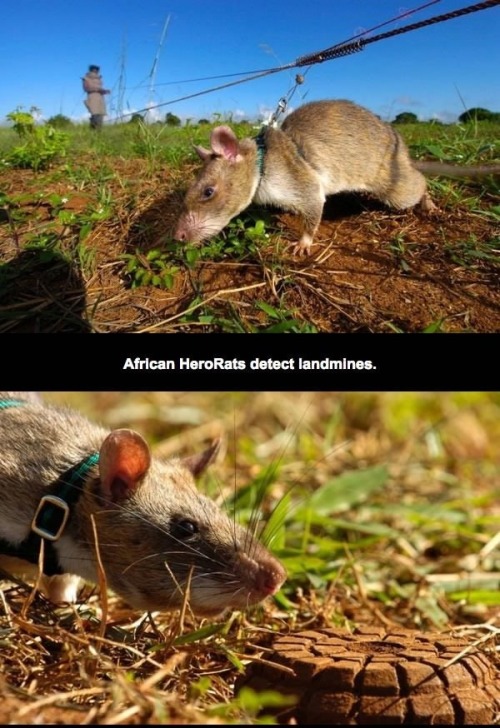
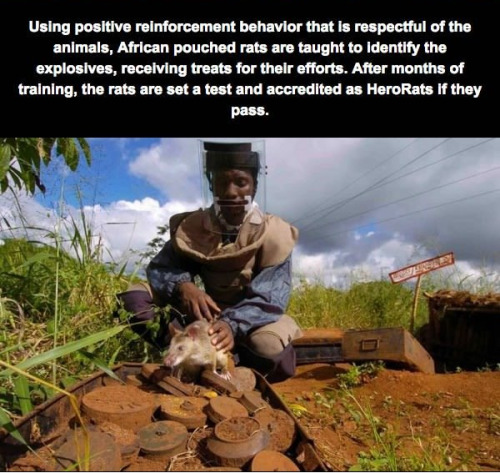


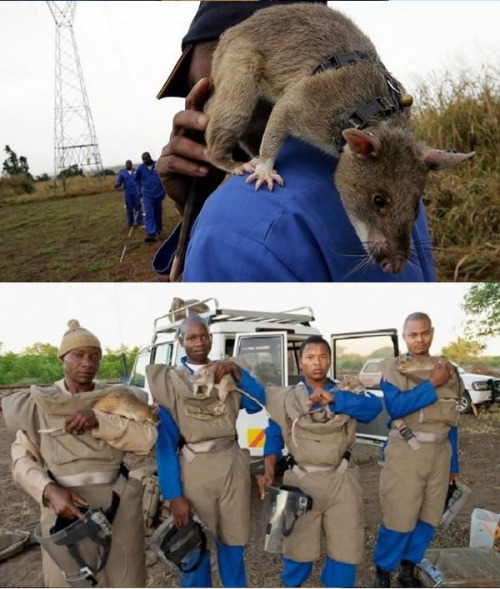

Hero Rats
Есть целая серия таких видяшек с разными животными
Nice!



Happy New 2018 Year!

Happy 2018, all! Delighted to bring out a new print - @davidmackkabuki watercolored @neilhimself’s words for the new year. (I will donate to @CBLDF & to @GaimanFND as well as a tiger rescue or two) http://www.neverwear.net



